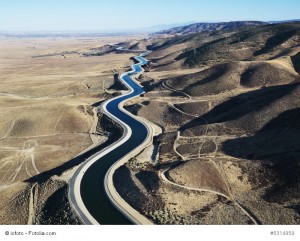
The San Francisco Bay Area is economically united by the Bay Area Association of Governments. Los Angeles is economically united by Los Angeles County and its huge population.
Valley counties, however, are not united. They seldom work together to promote mutual economic development and cooperation. Dominated by anti-government Tea Party, Libertarian, and Republican politicians, each city and county in the region operates as an independent fiefdom. Each political jurisdiction operates with little consideration for the wellbeing of nearby communities. Low population density within the region has not made the value of working together obvious to local leaders.
When the Metropolitan Water District decided to buy the islands in the Delta of the Great Central Valley, everyone knew why. The district wants to take water for use in Southern California via the construction of two large tunnels. The islands could be a staging ground for the taking or perhaps provide mitigation for the taking.
When the Metropolitan Water District agreed to buy the land, it was aware of the lack of Central Valley unity; the agency would not have entered into the agreement if the rape of Valley water would be difficult.
Los Angeles County has the population and politicians to dominate the state legislature, with Governor Jerry Brown the ring leader. Governor Brown has already supported spending over ten billion dollars in taxpayer money to build the two large tunnels for the benefit of Los Angeles. He would use some tax money paid by citizens of the Central Valley to take their water!
Each county of the Central Valley has a council of governments whose purpose is to unify the communities within each. With virtually no press coverage, the councils mostly discuss road construction and other local infrastructure projects. StanCOG, the local council of governments for Stanislaus County, holds one meeting a month averaging about two hours in duration.
The Valley’s councils of government do not participate much in the politics of water, leaving the issue to locally-owned and operated water companies. The councils rarely meet with jurisdictions outside their own respective counties because the region lacks unity.
Lacking an effective regional organization, the Central Valley has very little political clout. Central Valley counties will only be able to put up minimal opposition to the taking of water.
Valley Water Already Taken
An abundant amount of water that historically drained into the Central Valley is already taken by water companies outside the region. The San Francisco Municipal water system obtains all its water from the Tuolumne River water shed. East Bay Municipal Water District, serving the east side of the San Francisco Bay Area, takes Mukolumne River water.
Historically, precipitation in the Sierra Nevada has been sufficient to enable the takings without adversely affecting the northern and central parts of the Great Valley. But the southern part of the Central Valley experienced shortages decades ago; some areas previously under cultivation had to be abandoned for lack of water.
Farmers south of Merced have not received their full surface water allocation for several years. As wells go dry, they are gradually being put out of business. Farmers in the northern part of the Central Valley may like to see those in the south go out of business: the loss of farms means less competition, higher crop prices, and greater profitability. North valley farmers may not rise up in protest against the Metropolitan Water District unless their own water is taken. By then, protest will be too late: their numbers will be too small to affect the overwhelming size of the taker.
Fighting by Lawsuit
Lacking political clout, farmers in the Valley will only be able to stop the taking of water by lawsuit. With an endless supply of money from its ratepayers, the Metropolitan Water District will carry the day by attrition; lawsuits end when the opposition runs out of money.
Valley cities are also in jeopardy. Without water, they cannot develop economically. Houses can’t be built if there is no water available for hookups. As an example, the lack of water stunted the growth of Diablo Grande in western Stanislaus County.
Businesses will not move into the Central Valley if there is no water to grow their business. Agriculture related businesses will wither away if farms stop producing.
Historically, Central Valley farming interests have opposed environmental laws and regulations. Ironically, those laws are probably their only hope for keeping water rights.
Governor Sets a Precedent
In 2015, Governor Jerry Brown set a precedent by suspending water rights established in 1914. He simply declared a state of emergency and told those with water rights that the rights were suspended. Water districts with no shortage of water saw citizens within their jurisdictions put on arbitrary rationing; the City of Modesto was one of many entities that suffered lost income from water sales without compensation despite the fact that the city had water to sell.
Today, water rights are in a maelstrom of chaos that will be solved either by political action or the courts, most likely both. We know that the politics are stacked against the Central Valley because of the lack of unity and voters. Given the ability of the politicians to change laws at will, the courts will be hard pressed to preserve the rights of a region that will not stand united.
